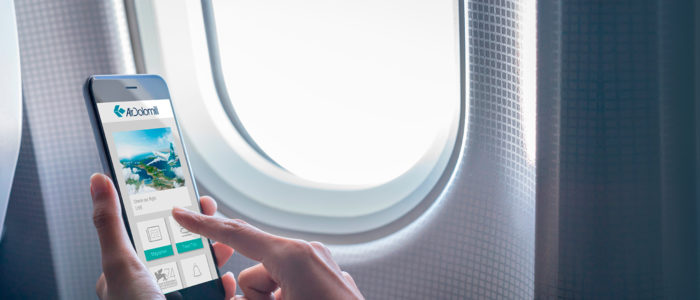Nowadays our lives are entwined with our smartphones, whether for business or for pleasure. With all of their pros and cons, these magic pocket objects are fundamental in our lives: e-mails, contacts, diary, addresses, web browsing, entertainment… It’s hard to spend even a few hours without checking our mobile phones. This is not just anecdotal: research conducted by Counterpoint Research on 3500 users shows that 26% of them use their mobile phone for around 7 hours per day, while only 4% use them for less than one hour throughout the day.
As we all know, however, it’s not possible to use all the functions of your smartphone while on board on a plane. Before take-off, passengers are specifically asked to turn off their mobile phones and flight attendants have to make sure this happens on all flights. This is why many devices have had a so-called “aeroplane mode” for some time now. Let’s look at what it’s for, what it is and how it works.
First of all, to give you just one example, you know that annoying “tutututututu” sound that you hear when your phone gets too close to a speaker or a radio? When aeroplane pilots communicate with the control tower via radio, mobile phone interference can disrupt communication and impact the correct receipt of messages.
On most devices, “aeroplane mode” is symbolised by an icon in the shape of an aeroplane and is very easily to find. It makes sure that mobile phones don’t interfere with on-board systems (not just communication radios), whilst allowing the device’s other functions to still be used. As long as they are offline, users can still enjoy music and multimedia content, games, favourite apps and so on.
Bluetooth and Wi-Fi are, however, compatible with our aeroplanes, so after you’ve set your smartphone or tablet to “aeroplane mode” in preparation for take-off, we suggest you access our on-board entertainment system and discover all the content available to make your flight even more pleasant…
The added value of the “aeroplane mode” for travellers is that device battery power lasts longer too. Continuously searching for signal while on board would consume battery power much quicker, leaving travellers with a nasty surprise by the time they land!




